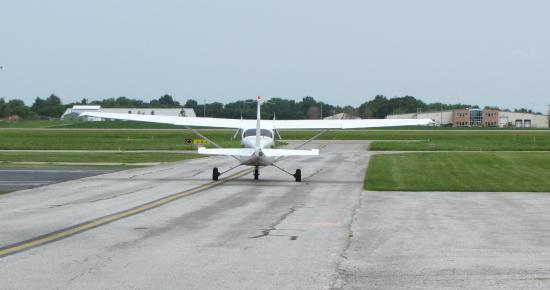A take off is a critical phase of flight, where the aeroplane is accelerated to flying speed, is then rotated and leaves the ground. It is an important phase where the pilot needs to be very aware of the aeroplane and the surrounding situation. Should an abnormality, or possible problem present itself, it needs to be detected, and a decision needs to be made swiftly. Knowing when to abort the take off is key to making a safe decision, so here are a few guidelines…
The starting point, which is often ill-considered by general aviation pilots, is to calculate how much runway length and distance you need for the take off. This varies from day to day, as certain conditions such as temperature, humidity, wind and pressure differences all affect aircraft performance. Add to this runway slope, surface type and possible contamination in the form of water and you may just need more distance than you needed just the day before, Similarly, we also need to check to see if we have enough distance to bring the aircraft to a complete stop, in the case that we accelerate, but abort the take off and stay on the ground (accelerate stop distance). All these calculations are done with reference to your specific aeroplane’s performance graphs, found in the aircraft operating manual. The graphs have different fields for specific conditions, aircraft weight and runway slope and condition. The graphs will tell you exactly how much distance you need for a take off, or an aborted take off, on that particular day.
Once you have determined the accelerate stop distance for your aircraft, from the appropriate graphs, then compare it with the accelerate stop distance available at your departure airport. Having a look at the airport layout you can identify a point along the runway which represents your accelerate stop distance.
So when should you abort the take-off?
Your instructor should have taught you to always observe your airspeed and RPM during the ground roll – you want to make sure the airspeed indicator is alive and increasing. Same goes for the RPM. If nothing is happening, immediately throttle back and stop. Perhaps your pitot cover is still on? Whatever the reason, you don’t want to take this problem into the air!
Not only should your airspeed be increasing on the ground roll, but you also want to set a limit in terms of how long it should take take to reach rotation speed (Vr). A good rule of thumb – if you have not reached Vr within 70% of the suitable runway length, then yes, it is a good decision to abort.
If your engine seems to be low on power, or is making funny noises, don’t push on in the hopes it will improve. Once again, don’t take the problem into the air.
Loss of directional control – the reasons could vary, such as a really strong crosswind, wind shear, defective control cable or even a jammed control surface. it is not a good idea to continue down the runway if you cannot effectively control your aircraft.
A door or canopy opening during take off, can affect the flight characteristics of some aircraft, so it may be necessary to abort the take off. Check the procedure in your POH, to determine if this is recommended.
Obstacles on the runway – this one might seem obvious, but you may have lined up with a clear runway ahead, only to find another aircraft, vehicle or even the local wildlife stepping out onto the the runway as you come tearing down. It may not be your fault, but please don’t play cat and mouse.
Finally, and this one is really simple, if it just feels a little off, or you feel uncomfortable in any way, it is ok to abort. Just be sure to inform ATC or aerodrome traffic when you do.




